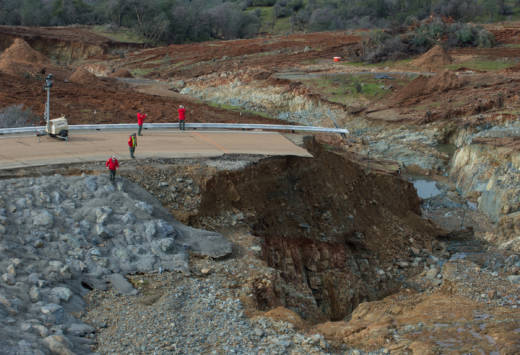SACRAMENTO — The head of California's water agency on Tuesday repeated his assertion that an emergency spillway at the Oroville Dam worked, drawing an incredulous response from a state lawmaker who represents tens of thousands of people ordered to evacuate when it was feared erosion at the spillway could lead to catastrophic flooding.
Bill Croyle, acting director of the Department of Water Resources, faced lawmakers for the first time since the evacuations in February. Authorities feared a concrete wall at the top of the emergency spillway was on the verge of collapsing and sending a wall of water rushing uncontrolled through downstream communities.
"In my opinion it didn't work at all," said Assemblyman James Gallagher, a Republican who represents many of the nearly 200,000 people who were ordered to evacuate. "When it started flowing and we had that erosion cut back, to me that's a failure. It didn't work as designed."
Croyle has controversially maintained since the days after the evacuation that the spillway did its job, though he's acknowledged that the erosion was more severe than anticipated. He told lawmakers that experts did not expect water to cut through rock.
"I believe the emergency spillway worked," Croyle said. "It performed an emergency function with the broken (main) spillway."

